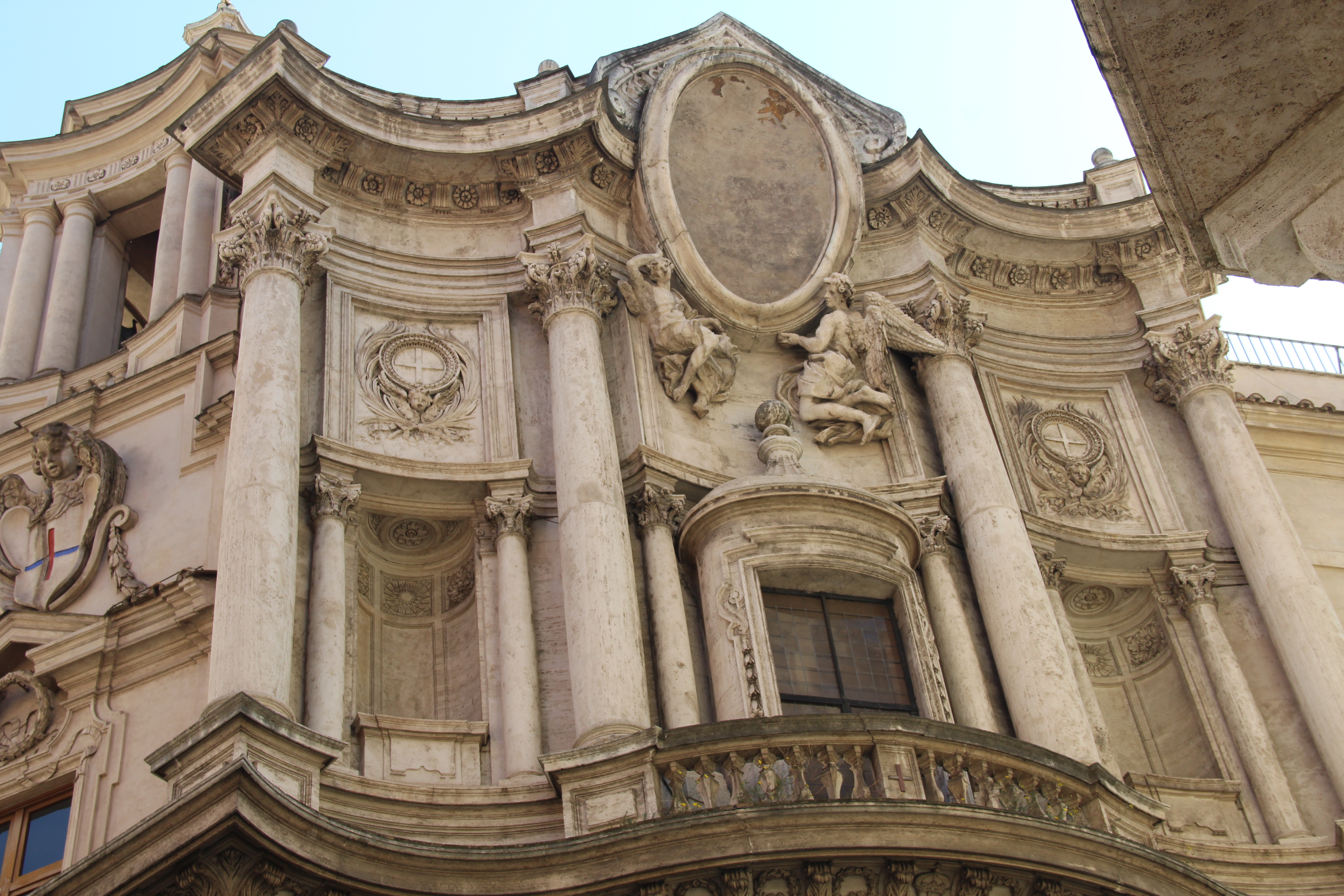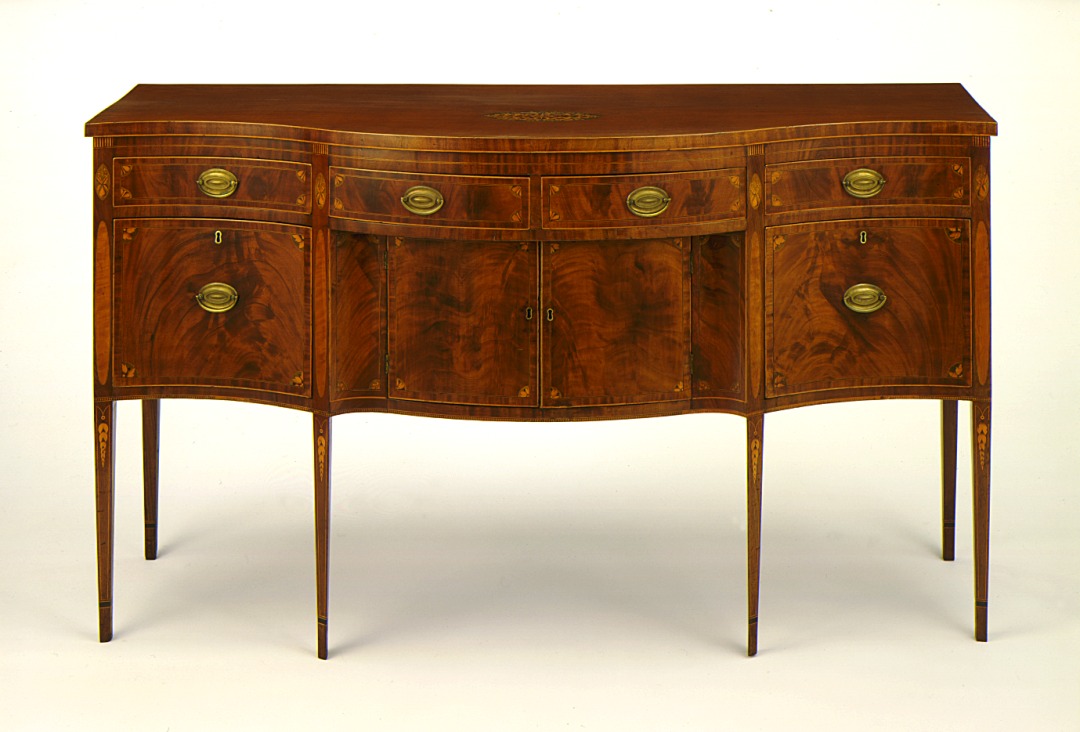Serpentine Shape on:
[Wikipedia]
[Google]
[Amazon]
 A serpentine shape is any of certain curved shapes of an object or design, which are suggestive of the shape of a
A serpentine shape is any of certain curved shapes of an object or design, which are suggestive of the shape of a

 The serpentine shape is observed in many architectural settings. It may provide strength, as in
The serpentine shape is observed in many architectural settings. It may provide strength, as in
 In furniture, serpentine-front dressers and cabinets have a convex section between two concave ones. This design was common in the
In furniture, serpentine-front dressers and cabinets have a convex section between two concave ones. This design was common in the
 The serpentine curve is a cubic curve as described by Isaac Newton, given by the cartesian equation ''y''(''a''2 + ''x''2) = ''abx''.
The origin is a point of inflection, the axis of ''x'' being an
The serpentine curve is a cubic curve as described by Isaac Newton, given by the cartesian equation ''y''(''a''2 + ''x''2) = ''abx''.
The origin is a point of inflection, the axis of ''x'' being an
 A serpentine shape is any of certain curved shapes of an object or design, which are suggestive of the shape of a
A serpentine shape is any of certain curved shapes of an object or design, which are suggestive of the shape of a snake
Snakes are elongated, Limbless vertebrate, limbless, carnivore, carnivorous reptiles of the suborder Serpentes . Like all other Squamata, squamates, snakes are ectothermic, amniote vertebrates covered in overlapping Scale (zoology), scales. Ma ...
(the adjective "serpentine" is derived from the word ''serpent''). Serpentine shapes occur in architecture, in furniture, and in mathematics.
In architecture and urban design

serpentine wall
A crinkle crankle wall, also known as a crinkum crankum, sinusoidal, serpentine, ribbon or wavy wall, is an unusual type of structural or garden wall built in a serpentine shape with alternating curves, originally used in Ancient Egypt, bu ...
s, it may allow the facade of a building to face in multiple directions, or it may be chosen for purely aesthetic reasons.
*At the University of Virginia
The University of Virginia (UVA) is a Public university#United States, public research university in Charlottesville, Virginia. Founded in 1819 by Thomas Jefferson, the university is ranked among the top academic institutions in the United S ...
, serpentine wall
A crinkle crankle wall, also known as a crinkum crankum, sinusoidal, serpentine, ribbon or wavy wall, is an unusual type of structural or garden wall built in a serpentine shape with alternating curves, originally used in Ancient Egypt, bu ...
s (crinkle crankle wall
A crinkle crankle wall, also known as a crinkum crankum, sinusoidal, serpentine, ribbon or wavy wall, is an unusual type of structural or garden wall built in a serpentine shape with alternating curves, originally used in Ancient Egypt, but ...
s) extend down the length of the main lawn at the University of Virginia and flank both sides of the rotunda. They are one of the many structures Thomas Jefferson created that combine aesthetics with utility. The sinusoidal path of the wall provides strength against toppling over, allowing the wall to be only a single brick thick.
*At the Massachusetts Institute of Technology
The Massachusetts Institute of Technology (MIT) is a private land-grant research university in Cambridge, Massachusetts. Established in 1861, MIT has played a key role in the development of modern technology and science, and is one of the ...
, the Baker House dormitory has a serpentine shape which allows most rooms a view of the Charles River
The Charles River ( Massachusett: ''Quinobequin)'' (sometimes called the River Charles or simply the Charles) is an river in eastern Massachusetts. It flows northeast from Hopkinton to Boston along a highly meandering route, that doubles b ...
, and gives many of the rooms a wedge-shaped layout.
*At San Carlo alle Quattro Fontane
The church of San Carlo alle Quattro Fontane (Saint Charles at the Four Fountains), also called , is a Roman Catholic church in Rome, Italy. The church was designed by the architect Francesco Borromini and it was his first independent commission. ...
, Rome, Italy (The Church of Saint Charles at the Four Fountains), designed by Francesco Borromini
Francesco Borromini (, ), byname of Francesco Castelli (; 25 September 1599 – 2 August 1667), was an Italian architect born in the modern Swiss canton of Ticino
, is a serpentine facade constructed towards the end of Borromini's life. The concave-convex facade of the church undulates in a non-classic way. Tall Corinthian columns
The Corinthian order (Greek: Κορινθιακός ρυθμός, Latin: ''Ordo Corinthius'') is the last developed of the three principal classical orders of Ancient Greek architecture and Roman architecture. The other two are the Doric order w ...
stand on plinths and support the main entablatures; these define the main framework of two stories and the tripartite bay division. Between the columns, smaller columns with their entablatures weave behind the main columns and in turn they frame many architectural features of the church.
*The London parks Hyde Park
Hyde Park may refer to:
Places
England
* Hyde Park, London, a Royal Park in Central London
* Hyde Park, Leeds, an inner-city area of north-west Leeds
* Hyde Park, Sheffield, district of Sheffield
* Hyde Park, in Hyde, Greater Manchester
Austra ...
and Kensington Gardens
Kensington Gardens, once the private gardens of Kensington Palace, are among the Royal Parks of London. The gardens are shared by the City of Westminster and the Royal Borough of Kensington and Chelsea and sit immediately to the west of Hyde P ...
contain 'The Serpentine
The Serpentine (also known as the Serpentine River) is a recreational lake in Hyde Park, London, England, created in 1730 at the behest of Queen Caroline. Although it is common to refer to the entire body of water as the Serpentine, strict ...
', a lake that spans both parks. It received the name from its snake-like, curving shape. A central bridge divides the lake into two parts, and defines the boundaries between Hyde Park and Kensington Gardens.
*Among Castle Howard
Castle Howard is a stately home in North Yorkshire, England, within the civil parish of Henderskelfe, located north of York. It is a private residence and has been the home of the Carlisle branch of the Howard family for more than 300 years ...
's gardens is a large, formal path behind the building, where a serpentine path is situated on a ridge. It opens out from the formal garden and merges back into the park. When buildings and site elements are set into the landscape, a serpentine path connecting every location is placed in-between features. The path merges into the landscape due to the natural shape, which allows convenient garden-path integration.
*A serpentine street is a winding roadway sometimes used to slow traffic in residential neighbourhoods, possibly bordered by landscaping features.
In furniture
 In furniture, serpentine-front dressers and cabinets have a convex section between two concave ones. This design was common in the
In furniture, serpentine-front dressers and cabinets have a convex section between two concave ones. This design was common in the Rococo
Rococo (, also ), less commonly Roccoco or Late Baroque, is an exceptionally ornamental and theatrical style of architecture, art and decoration which combines asymmetry, scrolling curves, gilding, white and pastel colours, sculpted moulding, ...
period. Examples include Louis XV commodes and 18th-century English furniture.
Furniture with a concave section between two convex ones is sometimes referred to as reverse serpentine or oxbow.
In mathematics
 The serpentine curve is a cubic curve as described by Isaac Newton, given by the cartesian equation ''y''(''a''2 + ''x''2) = ''abx''.
The origin is a point of inflection, the axis of ''x'' being an
The serpentine curve is a cubic curve as described by Isaac Newton, given by the cartesian equation ''y''(''a''2 + ''x''2) = ''abx''.
The origin is a point of inflection, the axis of ''x'' being an asymptote
In analytic geometry, an asymptote () of a curve is a line such that the distance between the curve and the line approaches zero as one or both of the ''x'' or ''y'' coordinates tends to infinity. In projective geometry and related context ...
and the curve lies between the parallel lines 2''y'' = ±''b''.
*
See also
* BACH motif *Serpent (instrument)
The serpent is a low-pitched early brass instrument developed in the Renaissance era with a trombone-like mouthpiece and tone holes (later with keys) like a woodwind instrument. It is named for its long, conical bore bent into a snakelike shape, ...
*S-curve (art)
In the visual arts, an S-curve is an '' S''-shaped curve that can serves a wide variety of compositional purposes. The term is usually applied to the standing human figure bending first one way and then back the other. It may also be applied more ...
*Tribhanga
Tribhaṅga or Tribunga is a standing body position or stance used in traditional Indian art and Indian classical dance forms like the Odissi, where the body bends in one direction at the knees, the other direction at the hips and then the oth ...
References and footnotes
{{EB1911, wstitle=Serpentine (geometry) Geometric shapes Furniture